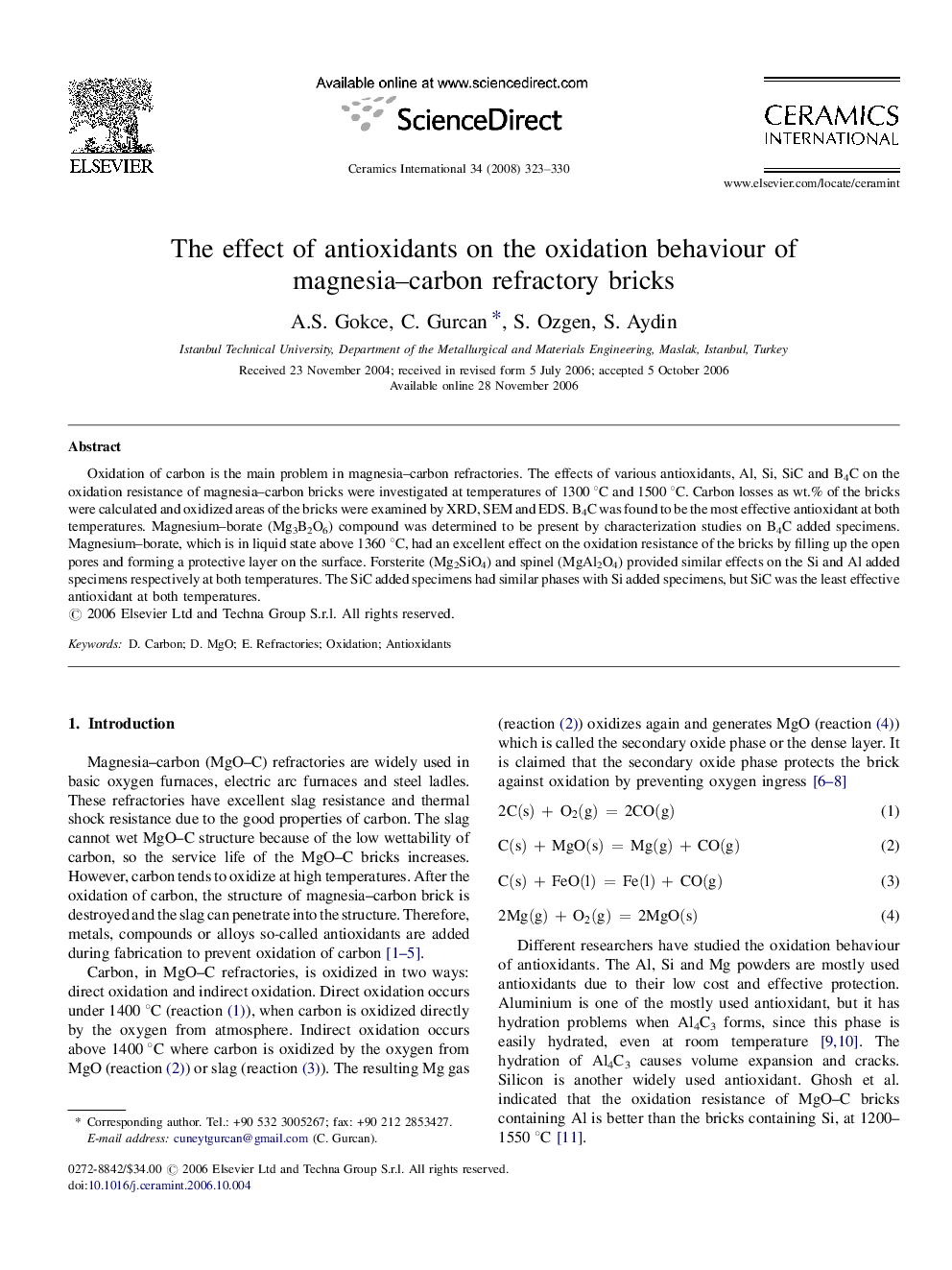| Article ID | Journal | Published Year | Pages | File Type |
|---|---|---|---|---|
| 1465063 | Ceramics International | 2008 | 8 Pages |
Oxidation of carbon is the main problem in magnesia–carbon refractories. The effects of various antioxidants, Al, Si, SiC and B4C on the oxidation resistance of magnesia–carbon bricks were investigated at temperatures of 1300 °C and 1500 °C. Carbon losses as wt.% of the bricks were calculated and oxidized areas of the bricks were examined by XRD, SEM and EDS. B4C was found to be the most effective antioxidant at both temperatures. Magnesium–borate (Mg3B2O6) compound was determined to be present by characterization studies on B4C added specimens. Magnesium–borate, which is in liquid state above 1360 °C, had an excellent effect on the oxidation resistance of the bricks by filling up the open pores and forming a protective layer on the surface. Forsterite (Mg2SiO4) and spinel (MgAl2O4) provided similar effects on the Si and Al added specimens respectively at both temperatures. The SiC added specimens had similar phases with Si added specimens, but SiC was the least effective antioxidant at both temperatures.
